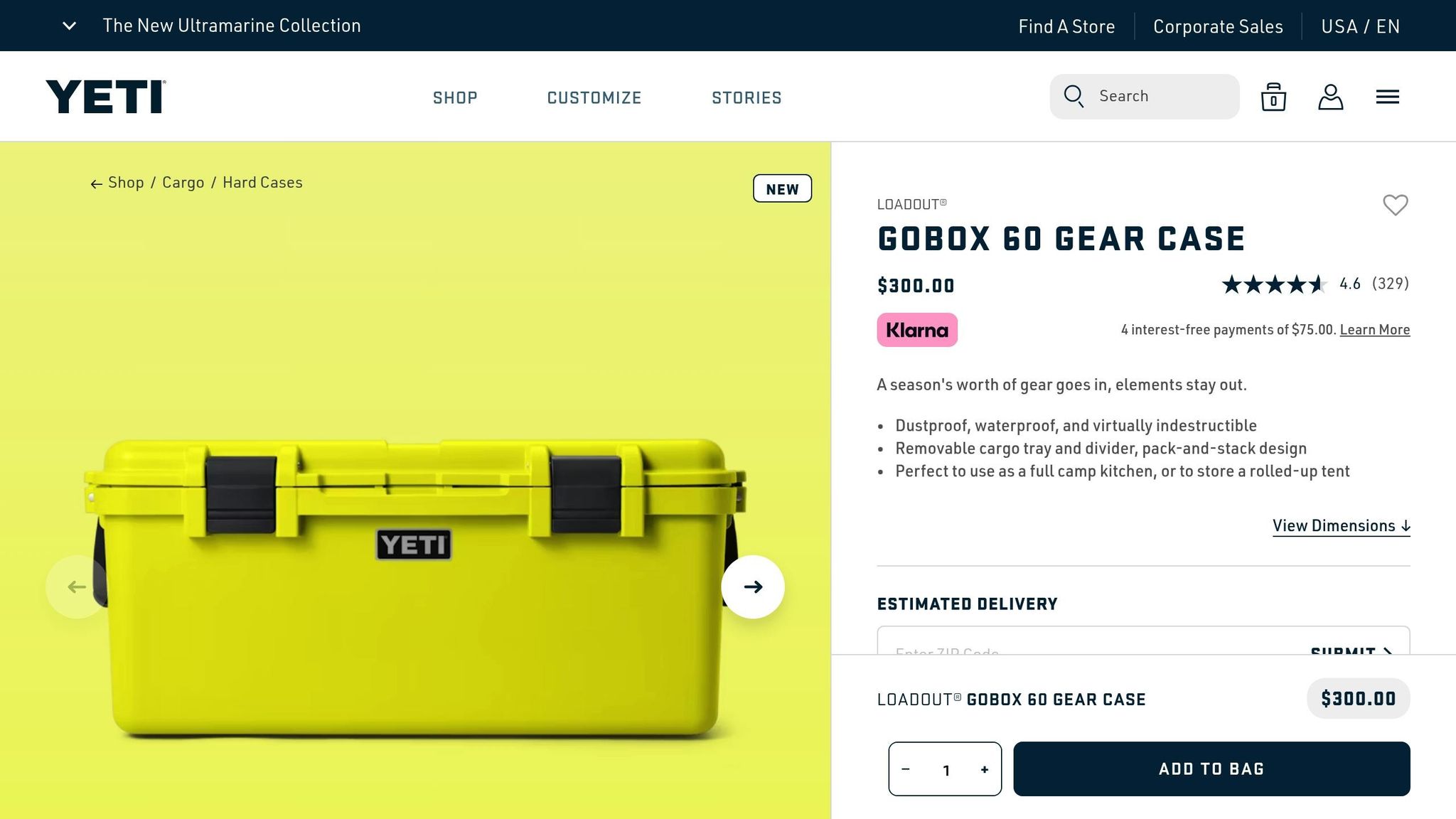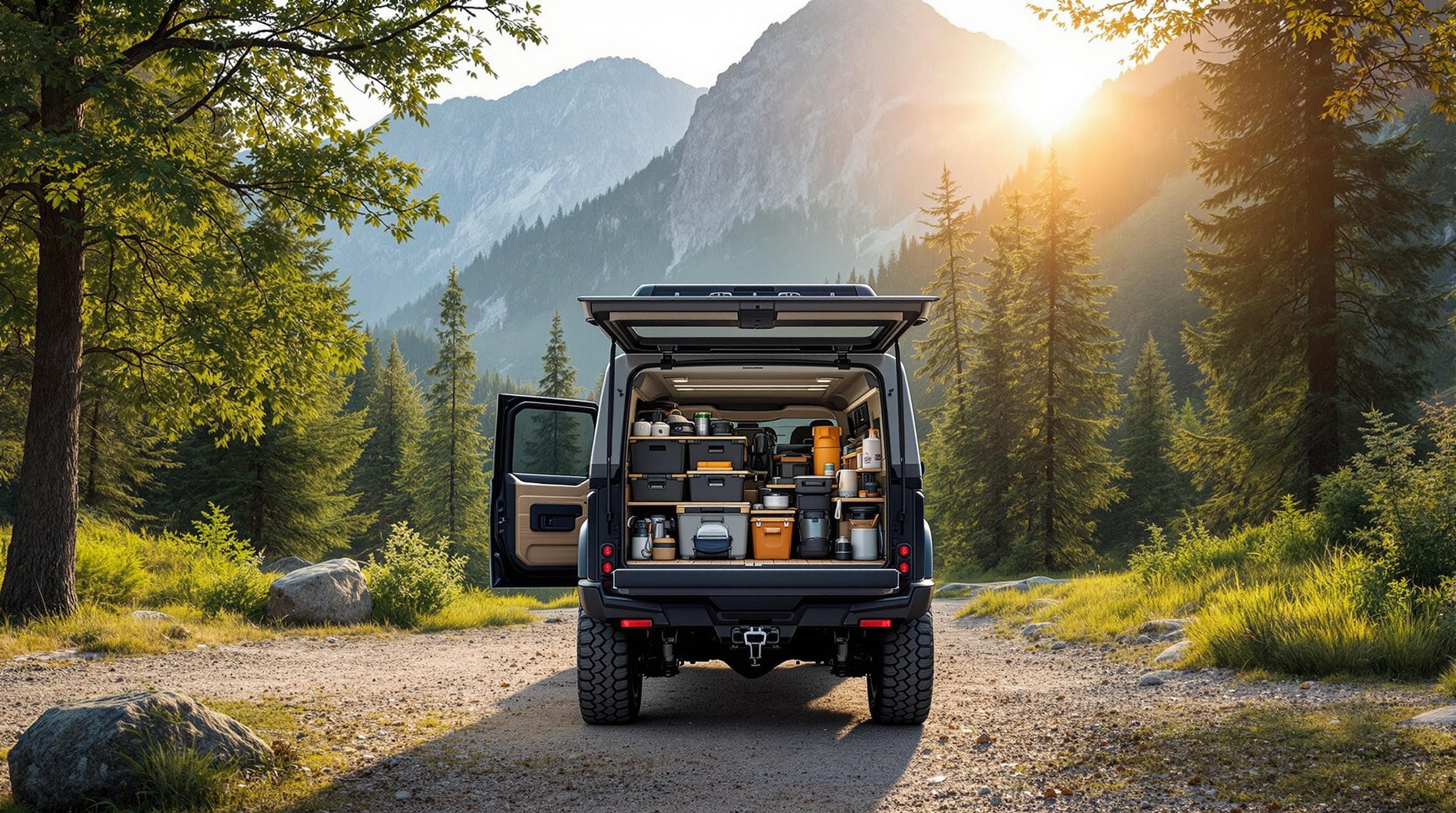When overlanding, the right storage boxes can make or break your adventure. They protect your gear from harsh weather, dust, impacts, and vibrations while maximizing your vehicle’s space. Here’s a quick breakdown of the best options:
- Hard-Shell Cases: Built tough with waterproof seals, UV-resistant materials, and heavy-duty latches for rugged conditions.
- Soft Storage Bags: Lightweight and flexible, perfect for clothing or bedding, with compression straps to save space.
- Modular Systems: Stackable and interlocking designs to optimize space and organization.
- Budget Options: Affordable, durable plastic boxes with basic weather resistance for light-duty trips.
Key Features to Look For:
- Durability and weatherproofing (e.g., IP65 ratings)
- Compact designs that fit your vehicle layout
- Easy access with ergonomic handles and quick-release mechanisms
- Secure mounting systems to handle rough terrain
Pro Tip: Use clear labels, compression techniques, and strategic weight distribution to keep your gear organized and accessible.
This guide covers everything you need to pick the best storage solution for your next adventure. Keep reading for a detailed breakdown of each type and tips to stay organized on the road.
Overland Cargo Boxes..Best of 2023!? Yeti GoBox 60, Pelican ...

Storage Box Types for Overlanding
Choosing the right storage boxes for overlanding can make a big difference in how organized and efficient your setup is. Different box types are designed for specific purposes, so understanding them can help you create a system that works for your needs. Here are four common types to consider.
Hard-Shell Cases
Hard-shell cases are built tough to handle the challenges of overlanding. Made from materials like rotomolded plastic, reinforced polymers, or aluminum, these boxes are designed to protect your gear from impacts, moisture, and harsh conditions.
Key features include:
- Waterproof gaskets and seals to keep contents dry
- Heavy-duty latches and handles for durability
- UV-resistant materials to prevent sun damage
- Integrated mounting points for secure attachment
These cases hold up under heavy loads and constant vibrations, often meeting IP65 or higher ratings for dust and water resistance.
Soft Storage Options
Soft storage bags are ideal for items like clothing and bedding. They’re lightweight, flexible, and compressible, making them a great choice when saving space is a priority.
Key features include:
- Water-resistant ripstop nylon for durability
- Reinforced stitching at stress points
- Multiple access points for convenience
- Compression straps to reduce bulk
- Modular attachment systems for easy integration
Modular Storage Systems
Modular storage systems are designed to maximize your vehicle’s space by using interlocking and stackable components. These systems are great for customizing your setup and making the most of every inch.
Key features include:
- Interlocking mechanisms for stability
- Standardized dimensions for compatibility
- Shared mounting systems for easy installation
- Quick-release capabilities for fast access
- Stackable design to save space
Low-Cost Storage Solutions
If you’re on a budget, there are plenty of affordable storage options that still get the job done. While they might not have all the bells and whistles, they’re great for occasional trips or as extra storage.
Key features include:
- Impact-resistant plastic for durability
- Basic weather resistance to protect contents
- Reinforced load-bearing points for added strength
- Simple mounting options for easy use
These budget-friendly options are practical for light-duty overlanding or as backup storage.
sbb-itb-b1567d8
How to Pick the Right Storage Box
Build Quality and Weather Protection
Look for a storage box that’s built to last and can handle tough conditions. As Titantrek puts it:
"Crafted with rugged materials to withstand every adventure."
For example, the Atlas Vault vacuum compression backpack features thick, waterproof fabric, as noted in a recent customer review. Once you’ve confirmed the materials are sturdy, check the dimensions to ensure it meets your space needs.
Box Dimensions and Storage Space
Pick a box that fits your gear without overwhelming your vehicle. Measure the height, floor space, and access points of your storage area to find the right size.
Access and Handling
Ease of use is key. Features like dual-sided openings, ergonomic handles, and quick-release mechanisms can make your trips smoother. Beyond easy access, make sure the box attaches securely to your vehicle for stability.
Vehicle Attachment Methods
A strong mounting system is just as important as a durable design. Ensure the box’s attachment method is compatible with your vehicle and can handle rugged conditions.
Storage Layout Options
Choose a box with a flexible interior. Adjustable dividers, removable trays, or mesh pockets help keep your gear organized and prevent items from shifting during transit. These features make it easier to find what you need when you need it.
Gear Organization Methods
Organizing your gear properly not only keeps it safe but also makes heavy-duty storage boxes more efficient.
Clear Labeling System
Use waterproof labels or permanent markers to label your storage boxes clearly - both inside and out. A color-coding system can be helpful for quick identification (e.g., one color for cooking gear, another for camping supplies). Adding a list of contents under the lid is another quick way to locate what you need. Also, think about how you pack to make the most of the available space.
Space-Saving Packing
Compression techniques can significantly increase your storage capacity. Titantrek sums it up perfectly:
"DoubletheGear,HalftheSpace" - Titantrek [1]
Vacuum compression systems are a great option for reducing bulk while keeping your gear watertight [1]. To save space effectively:
- Stack items vertically for easier access
- Use soft bags for odd-shaped items
- Fill empty spaces with smaller gear
- Keep frequently used items near access points
- Use modular containers to organize smaller items
Load Distribution
Efficient packing isn’t enough - you also need to distribute the weight properly for vehicle stability. Place heavy items low and near the center to maintain balance, and secure everything to prevent shifting. Recovery gear and tools should be close to the vehicle’s center of gravity, while lighter items like sleeping bags or clothes can go higher or to the sides.
Conclusion
When it comes to overlanding storage, the key is finding options that are tough, well-organized, and make the most of your available space.
"Arrived in reasonable time, seems of very good quality of materials, lots of compartments for all eventualities, very well organized, vacuum system works perfectly and the pump is powerful." [1]
This feedback highlights the critical features we've discussed - weather resistance, modularity, and smart design. These elements ensure your gear stays protected, accessible, and neatly arranged, no matter the journey.
The ideal storage solution isn't just about how much it can hold - it’s about thoughtful design that keeps everything secure and easy to use. With durability, organization, and efficient design, you're ready to tackle any adventure with confidence.

Vacuum Compression Bags for Multi-Airline Travel
How Vacuum Compression Helps Cut Packaging Waste